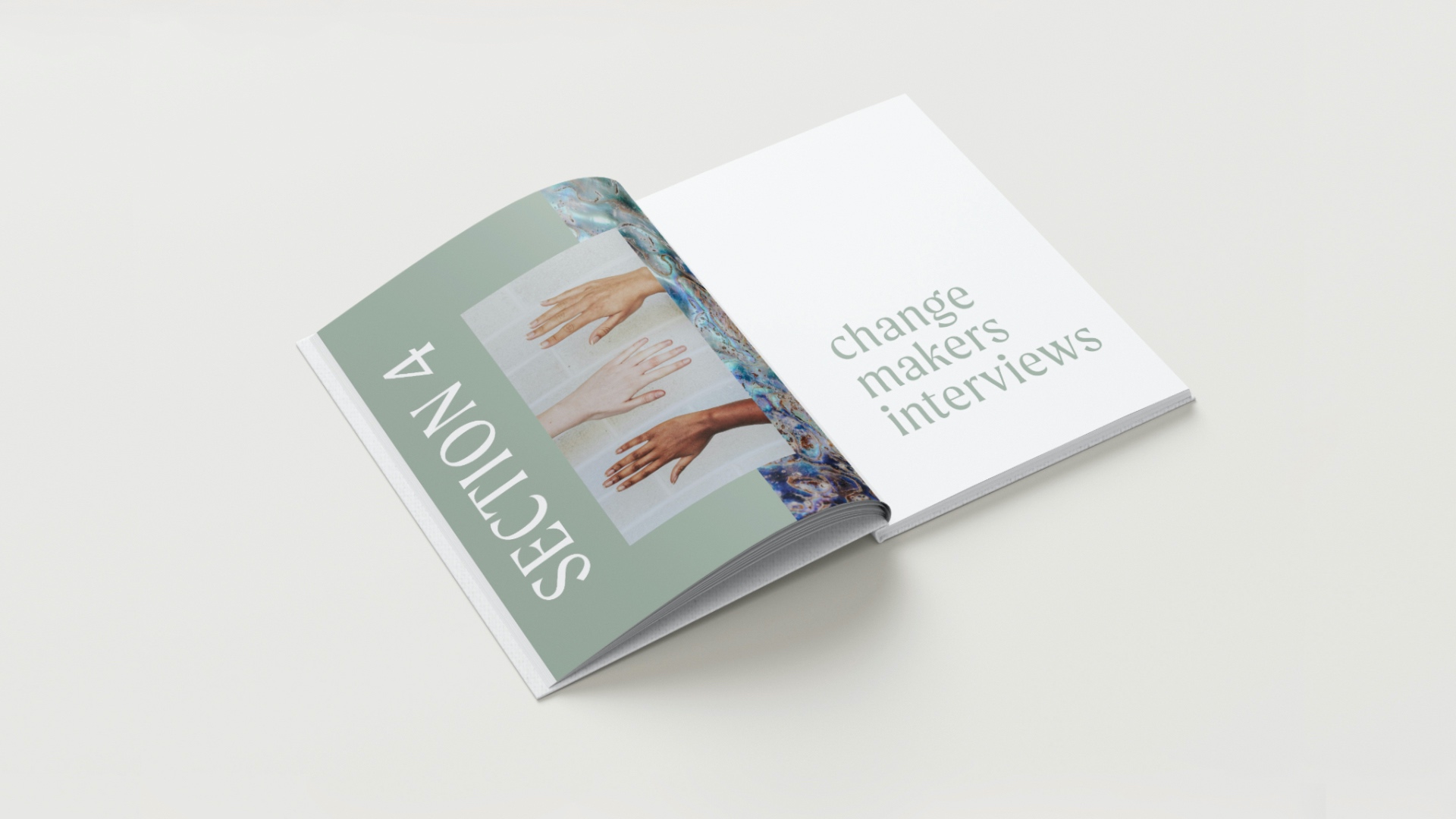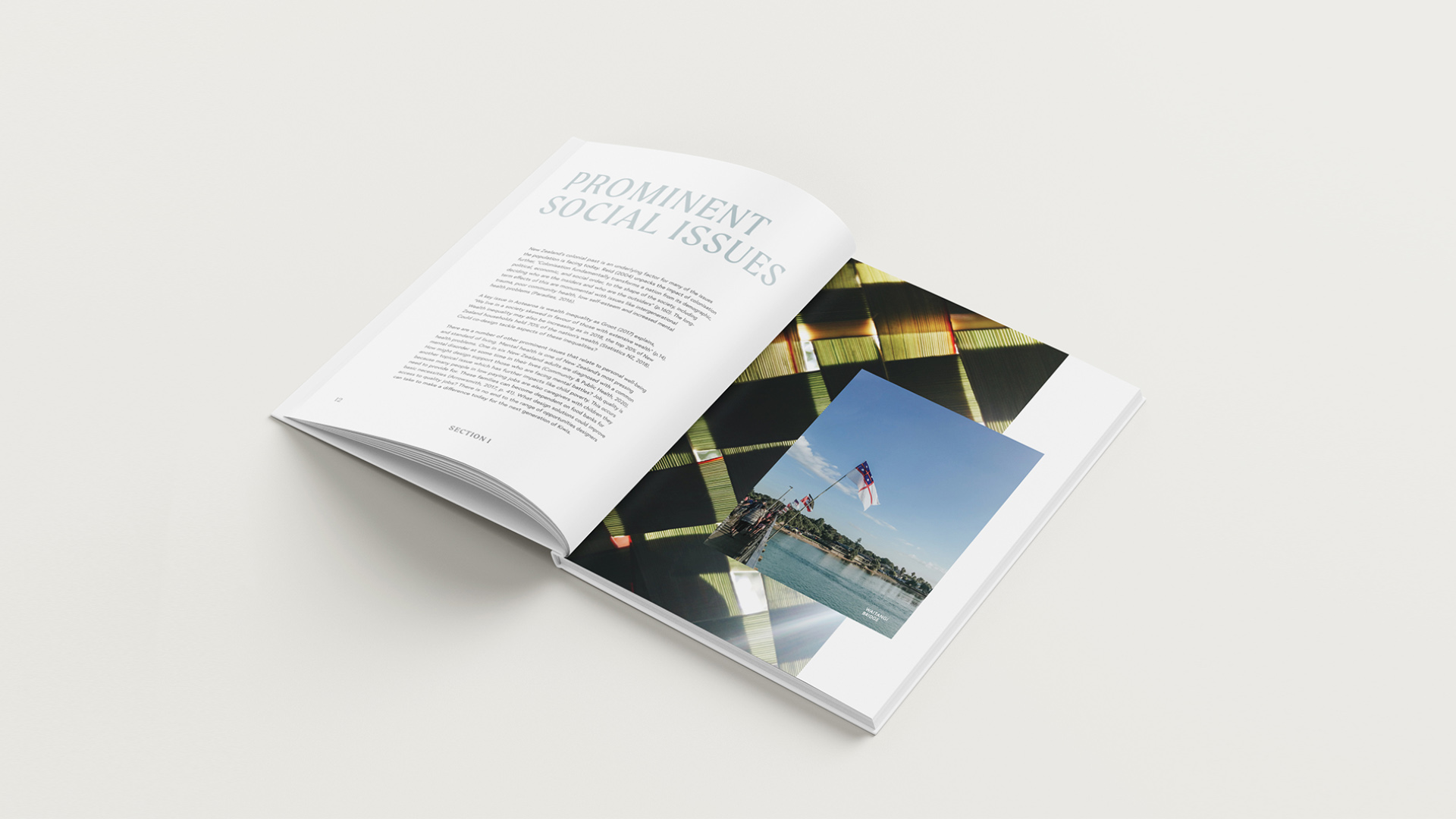
Social Design in Aotearoa
Change Makers is an editorial publication which highlights a designer’s ability to initiate social good. It aims to inspire current and emerging designers to engage with the issues around them. To ensure different voices are involved in this discussion, interviews have been carried out with a vocationally and culturally diverse group of designers. These interviews reveal the importance of respecting indigenous frameworks, listening to communities at the heart of an issue and taking a co-design approach to social projects. As a forerunner to these interviews, research has been carried out into the issues Aotearoa is facing in the present day. With a New Zealand target audience, the chosen colours and images that feature alongside this text are reflective of the beauty of our whenua. This book serves as a fitting reminder for this generation that designers are indeed makers of change.
Social design refers to the utilisation of the design thinking process in order to engage with social challenges. The aim of this project is to promote awareness and inspire engagement with social design. An initial hypothesis was that social design in New Zealand is not yet widely acknowledged or documented. This is both a problem and an opportunity.
While it is important to think about social change on a global scale, this publication focuses on our own Kiwi backyard. Our whenua is rich with incredible scenery. It may appear that much of the population has a good standard of living. However, New Zealand is also a place where many experience child poverty, domestic abuse, mental health issues and wealth inequality. This country houses an array of problems yet to be addressed and a range of opportunities to improve the livelihoods of others. Will the next generation of designers step up to the challenge? Will we get on board with the social design movement? Or will we remain constrained by society’s limited view of the role of a designer?
This project utilised qualitative and quantitative methods to collect data. Qualitative information paints a broad picture of the social design industry. Primary data was collected through narrative interviews with designers. These narrative interviews provided insights from design professionals and documented their design journeys. These wāhine toa are making a difference in their communities and their various design journeys show us that change is possible. The focus on female designers also subtly addresses gender inequalities in the design industry.
Te Ao Māori is referenced throughout the project. Highlighting Aotearoa’s indigenous framework situates the project within its cultural context. Section two of Change Makers specifically focuses on honouring Te Tiriti O Waitangi. This plays a central role when engaging with social design and working with communities.
Though this book just begins to scrape the surface of these topics, it provokes critical thinking and raises questions. Readers are encouraged to start their own learning journey’s as they wake up to the real needs around them. Overall, this publication showcases that design is not passive; rather it works to activate change.




